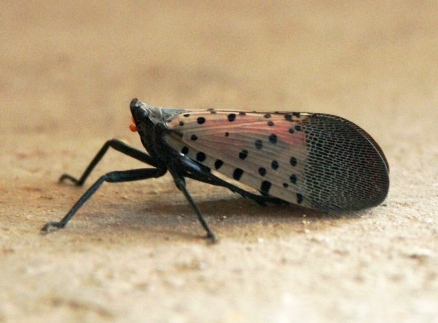Is the Spotted Lanternfly Harming Your Property?
Is the Spotted Lanternfly Harming Your Property?

Going to a Pennsylvanian wooded area around this time of year is devastating. It’s both muggy and buggy. Over 585 various insect species roam Pennsylvania. These bugs range from common house flies to ladybugs to mosquitoes. Some are harmless, while others are harming the local environment that we live in. A prime example of a destructive Pennsylvanian species is the Spotted Lanternfly.
The Spotted Lanternfly isn’t from around here. It’s considered an invasive species, one that is not native to a particular ecosystem and causes harm to the environment it settles in. Originally from Southeast Asia, the lanternfly has traveled all the way to Pennsylvania by attaching to travelers and sightseers. The lanternfly’s unexpected settlement in southeastern Pennsylvania is harming both the environment and economy.
There’s one problem with the Spotted Lanternfly: its desire to eat. Lanternflies attach to grape vines, fruit trees, and tree trunks, which damages the local plants. The lanternflies are feeding off of thriving Pennsylvanian industries like grapes, tree-fruit, hardwood, nursery, and landscape. Together, these industries provide over $18 billion to Pennsylvania’s flourishing economy. If the lanternflies continue to destroy native wildlife at this rate, these industries will deplete over time.
The Pennsylvania Department of Agriculture (PDA), the United States Department of Agriculture (USDA), and Penn State University are working to combat the invasive Spotted Lanternfly. Governor Tom Wolf has approved a $3 million budget to control Spotted Lanternflies throughout Pennsylvania. This budget includes maintaining Spotted Lanternfly spreading and spreading awareness.
The PDA has established 13 quarantined counties that have high levels of Spotted Lanternfly production. These counties require every business that transports goods to check their cargo thoroughly for Lanternflies before traveling through a non-quarantined county. This precaution is being taken to avoid the spread of Spotted Lanternflies in neighboring counties.
What should you do if you see a Spotted Lanternfly in your area? Report your sighting to the PDA, especially if you spot one in a non-quarantined county. Make sure your report includes:
• Precise location of sighting
• Date of sighting
• Type of lanternfly spotted (egg, instar, or adult)
• Pictures, if applicable
• Proper contact information
CEDARVILLE Engineering Group, LLC (CEG) works on all aspects of environmental protection from sustainability to overall growth. Call us at 610-705-4500 or email info@cedarvilleeng.com to find out more.
By: J. Auerbach
What can we do for you?
Address: CEDARVILLE Engineering Group, LLC 159 E. High Street, Suite 500 Pottstown, PA 19464 Phone: 610-705-4500 Fax: 610-705-4900 info@cedarvilleeng.com